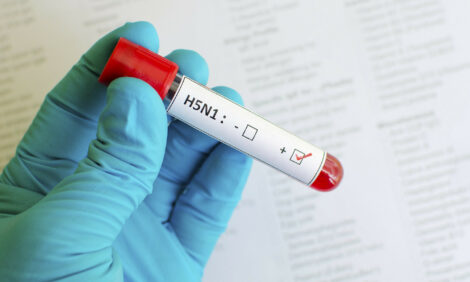



Feed Industry Lags in Africa
AFRICA - For Africa to reach its full livestock production potential, farmers need access to a continuous supply of good quality and safe feed. Dr Hinner Köster, CEO and shareholder of Kaonne Investments, a private holding company operating through five subsidiary companies in the entire animal feed chain, talked to Glenneis Kriel about challenges preventing this from happening.The absence of a well-developed feed industry is one of the major reasons why many African farmers struggle to break out of the poverty trap. Kaonne Investments, through its feed consultancy company, Feed First, has been doing consultancy work all over Africa in countries such as Namibia, Zimbabwe, Mozambique, Zambia, Tanzania, Kenya, Nigeria and Sudan.
In all these countries there is one recurrent theme: farmers, whether they are farming with poultry, pork or cattle, are not reaching their full business potential, because they don’t have access to a constant supply of good quality feed and associated extension services.
But why not? Firstly, many feed mills are struggling to get off the ground in the absence of a properly enforced and fragmented regulatory framework and industry standards.
“In the absence of effective analytical testing facilities and quality assurance systems, farmers only have a miller’s word to go on when it comes to the content and nutritional value of feed products,” Dr Hinner Köster explained.
The feed millers have similar challenges when it comes to buying feed ingredients. Having difficulty in measuring the nutrient content of feed ingredients, there is a big discrepancy in the quality of products produced.
Companies that are investing in technology and knowledge to overcome these challenges also struggle, because they have to compete with “backdoor” feed producers that take short cuts and avoid quality assurance programs in an attempt to cut costs.
Government responsibility
Dr Köster feels that African governments should address this situation by creating the necessary structure and legislation to govern the industry.
This should cover everything from raw material imports and quality standards to supply chain management and the licensing of feed manufacturers.
He pointed out that in a country, such as Kenya, up to seventy per cent of the raw materials are imported: “Countries like that need to develop a strategy to create a quality controlled reserve supply of raw material to enhance the quality and reduce large seasonal fluctuations in availability and price.
"Stimulating local production and addressing high taxes and import duties to have continuous global access to cost effective feed ingredients, will help to solve this problem,” Dr Köster said.
Better controls are also needed to enforce and control feed quality and food safety.
“Food safety is becoming a growing concern in many of these countries. Although a reasonable protocol for end-products are often followed on paper, standards and guidelines are generally insufficient and not properly executed, neither enforced nor maintained in practice.
"It also seems that only larger mills make efforts to comply, while the informal sector simply ignores these standards,” Dr Köster said.
The industry itself should nevertheless not wait on Government to do everything for it, but organise itself by creating an Animal Feed Association that represents the whole supply chain from the raw material and pre-mix suppliers to the feed manufacturers.
“While such an organisation cannot be expected to govern the industry, it can play a huge role in self-regulation. A strong organisation that represents the entire industry can also lobby obstacles that are plaguing the animal feed sector with government,” Dr Köster said.
Knowledge and education
Dr Köster identified a lack of knowledge and skill as another constrain. When it comes to the formulation of diets, many of the feed companies and livestock producers don’t have the necessary technology and skills, or access to an affordable range of quality raw materials to properly formulate their products.
Another big challenge is the quality of roughage sources that could have contributed significantly to cost effective production. This all results in the use of very basic, unbalanced and underperforming rations, according to him.
“A major problem is that dietary formulas and feed ingredient specifications cannot be based on book values or recommendations, because of the large variability in the nutrient composition of many of the ingredients and the unique and diverse production environment African farmers are facing.
"The pasture, fodders and silage used by these farmers should be taken into account during the formulation of diets, so that concentrate feeds compliment roughage sources, which again is a major challenge due the variability in quality and availability,” Dr Köster explained.
In addition to this, it should be remembered that the majority of livestock in these countries are of substandard quality in terms of their genetic make-up and often underfed and under-nourished.
While efforts are made to address this in many of these countries, there is still a long way to go.
He explained that feeding programmes are often failing, because farmers don’t feed their animals enough concentrates. In addition to this, farmers are not feeding animals according to their production levels or genetic potential.
The situation once again is aggravated by a lack and poor use of roughages of sufficient quality. Most premix nutrient levels are also too low and imbalanced, while the quality of micro-ingredients are suspicious. The use of high technology, and cost effective performance enhancing ingredients is in most countries also non-existent.
Many farmers, and more so smallholders, also lack knowledge and skill to discern between high and poor quality feeds and proper feeding rationing. This affects their ability to make informed decisions and maximise farming profitability, which in turn obstructs the growth potential of the feed industry. The problem is exacerbated by an underdeveloped information network.
Dr Köster said that efforts were needed to improve the genetic performance of animals, through for example the introduction of better quality animals: “By improving the performance of animals and their potential through improved feeding and reproduction strategies, farmer income and profitability would greatly improve. By feeling these improvements in their pockets, farmers would be willing to invest more money in good quality well-formulated feeds.”
He added that initial financial support to farmers and getting rid of import- and other unnecessary barriers to allow access to cost effective and high quality feed ingredients, will also contribute significantly to the production of more profitable and lower cost livestock products.








